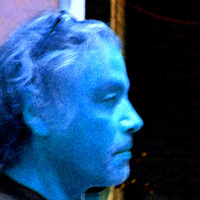Andrei Gorea
Nancy University, Laboratoire Psychologie de la Perception, Faculty Member
Research Interests:
Research Interests:
Research Interests:
Research Interests:
Research Interests:
Research Interests:
Research Interests:
Research Interests:
Research Interests:
Research Interests:
Research Interests: Psychophysics, Motion perception, Color Perception, Vision, Humans, and 3 moreColor, Light, and Luminance
Research Interests: Psychology, Scientific Visualization, Computer Vision, Image Processing, Computational Modeling, and 18 morePattern Recognition, Visual perception, Performance, Machine Vision, Image segmentation, Multidisciplinary, Simulation, Visual Processing, Color, Computer Model, Orientation, Human Performance, Frequency, Spatial Frequency, Predictive models, Human Vision, Computational Model, and Spatial Variation
This paper describes a novel class of visual stimuli that have been created to study stroboscopic motion perception along multiple attributes. The stimuli are composed of discrete elements, each of which can be characterized by an... more
This paper describes a novel class of visual stimuli that have been created to study stroboscopic motion perception along multiple attributes. The stimuli are composed of discrete elements, each of which can be characterized by an arbitrary number of attributes (color, luminance, spatial frequency, binocular disparity, etc.). There are two choices for the spatiotemporal arrangement of each attribute: to elicit either unambiguous (unidirectional) motion perception or ambiguous (bidirectional) motion perception. This affords the unique ability to elicit simultaneous motion perception in opposing directions from identical stimuli. The prevailing direction depends on the relative strength of the attributes’ contribution to the motion mechanisms (for short frame duration), or on the particular attribute being attended to (for long frame duration). Thus, this class of stimuli opens up the possibility of isolating specific motion mechanisms in the visual system.
